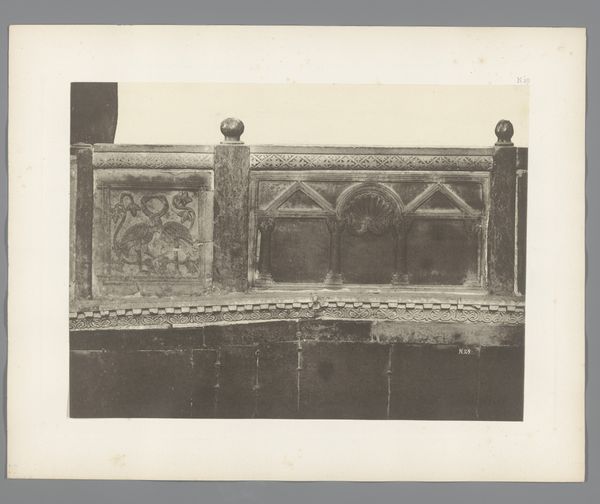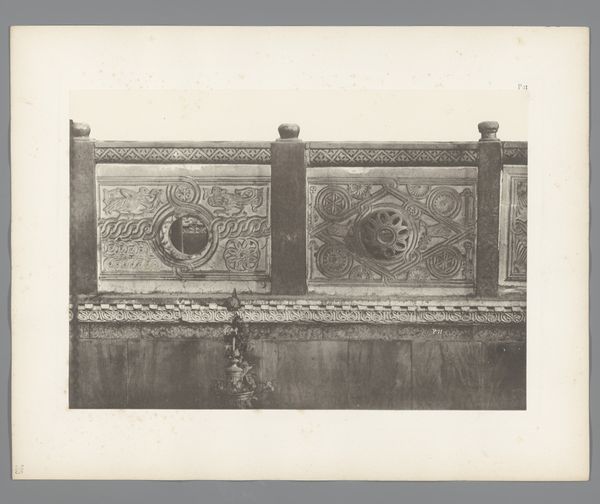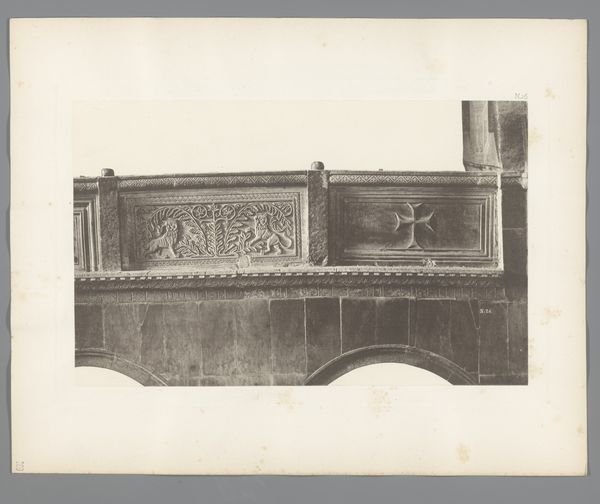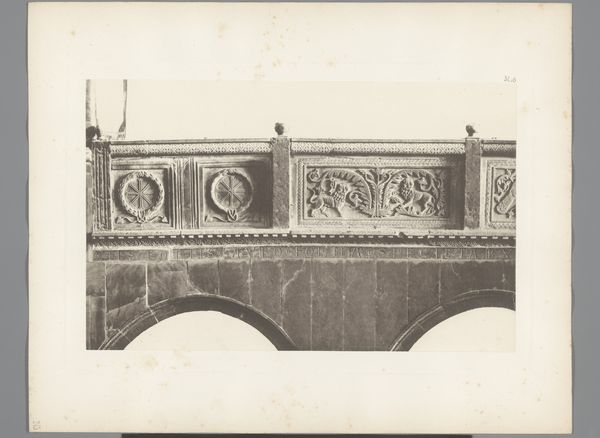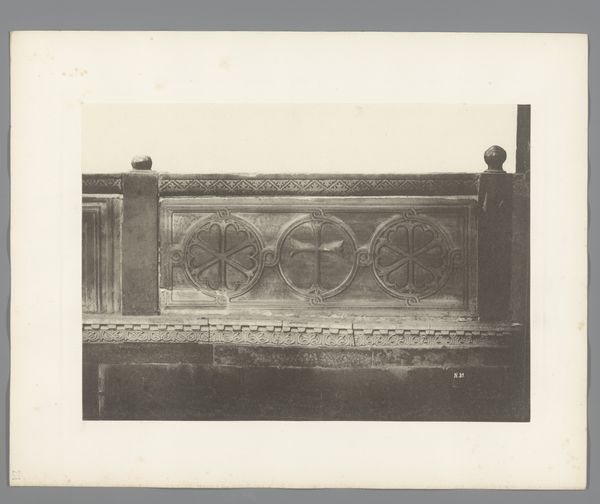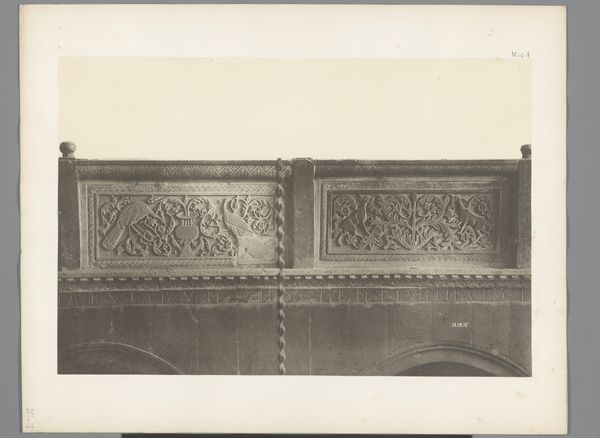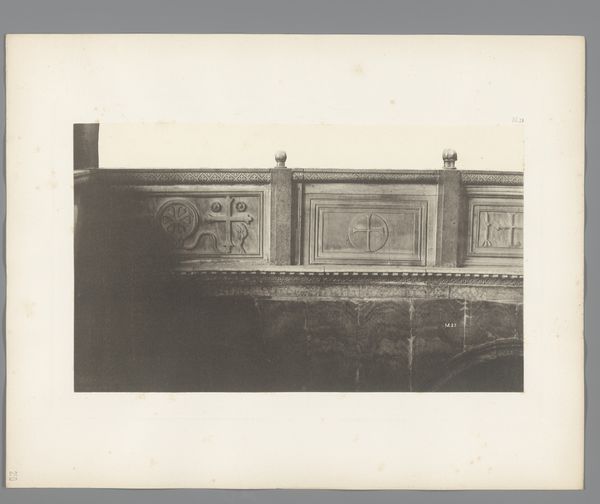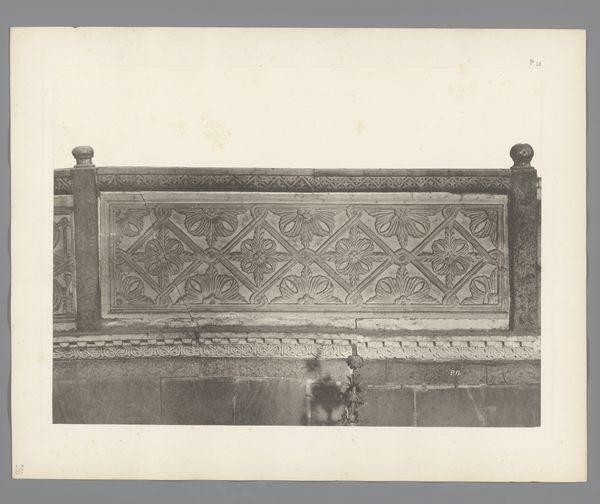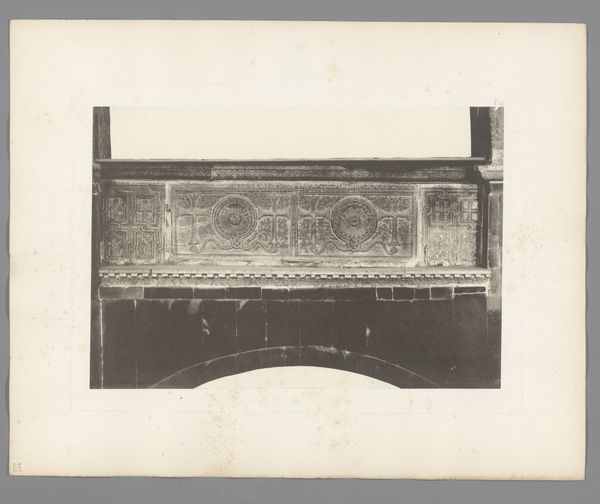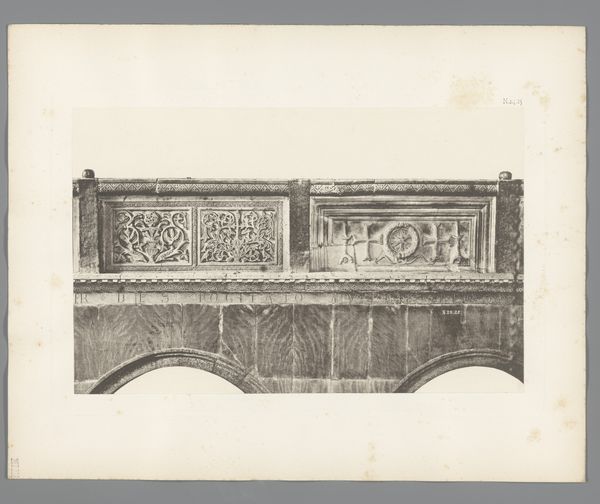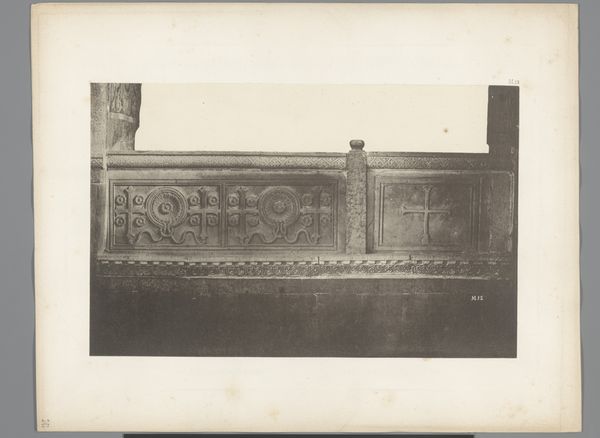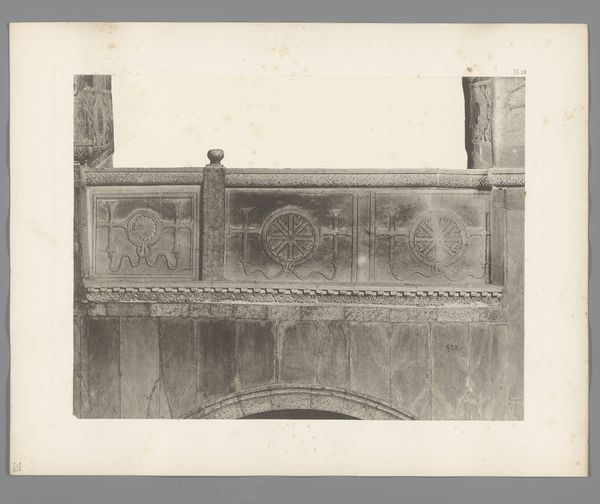
carving, print, relief, photography
#
carving
# print
#
greek-and-roman-art
#
relief
#
landscape
#
photography
#
ancient-mediterranean
Dimensions: height 311 mm, width 394 mm
Copyright: Rijks Museum: Open Domain
Curator: The subject here is a photographic print from before 1885 by Carl Heinrich Jacobi, entitled “Relief with Lions of San Marco in Venice.” My first thought is that the texture of the stone practically leaps out at you. Editor: The material clearly dictates form here. The photographic medium has the capability to preserve the surface. Think of all of the laborers who, throughout different social stratifications, extracted the stone and crafted the details visible. Curator: The depiction includes two distinct reliefs: on the left, an intricate interwoven geometric pattern is broken by a ring, and on the right, two winged lions are flanking a heraldic emblem. How do these lions, symbols of Venice, operate in the cultural identity and social construction of the city itself? Editor: This photograph seems to emphasize both the practical means of production and the consumption of stone materials in Venetian public sculpture, while at the same time referencing ancient traditions. Curator: Precisely, Venice adopted St. Mark as its patron saint, appropriating his symbol, the winged lion. This lion is used in this context to express Venetian power. In terms of social meaning, we might reflect on the historic power dynamics at play and what messages of identity the construction seeks to propagate. Editor: Yes, how did Venice build and solidify its identity through tangible material displays such as this one? Curator: Notice the inscription carved above the arches that the photograph depicts. Considering the stone used to create this photograph, and given Jacobi’s focus on landscape photography, is it possible he was attempting to capture a comprehensive landscape or history of Venice and its structures through this image? Editor: Absolutely. Photography in this era functioned as both document and aesthetic object. It democratized access to imagery that previously required patronage, creating both a market and discourse around visual media in relation to monuments like the reliefs of San Marco. Curator: Thank you. This print pushes us to think critically about cultural appropriation, power dynamics, labor, and image-making technologies—particularly as Venice promotes itself as a symbol of strength. Editor: Right. Thinking about its place in visual culture then helps us further contextualize both the photographed sculptural object and Jacobi's photographic interpretation.
Comments
No comments
Be the first to comment and join the conversation on the ultimate creative platform.
